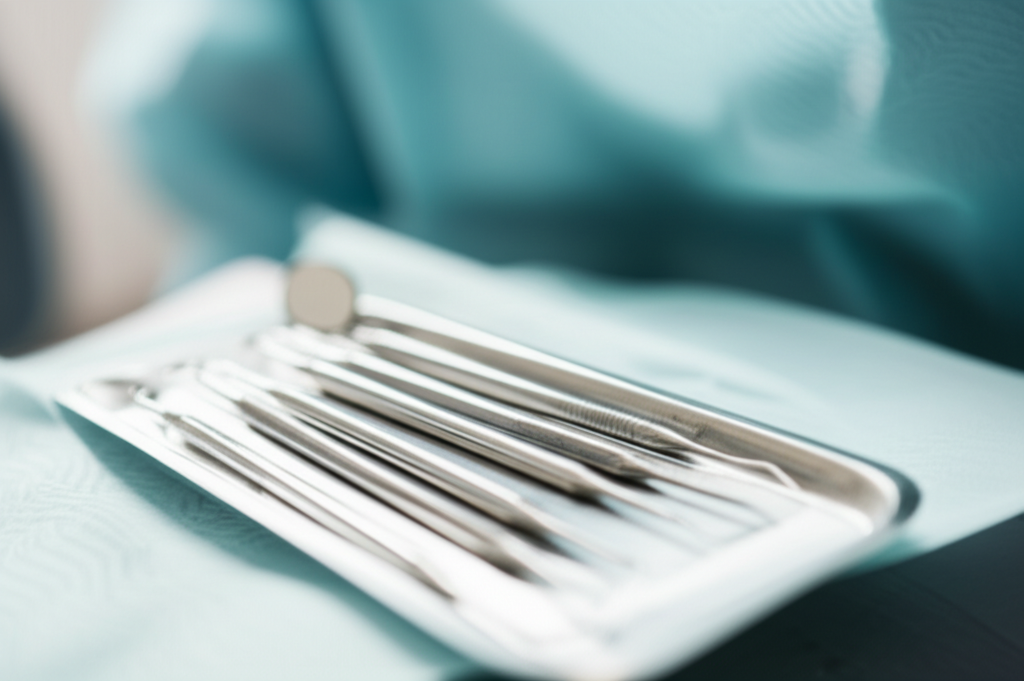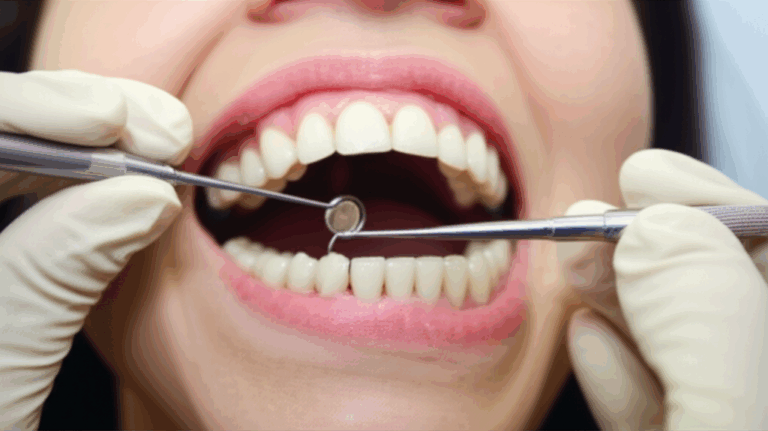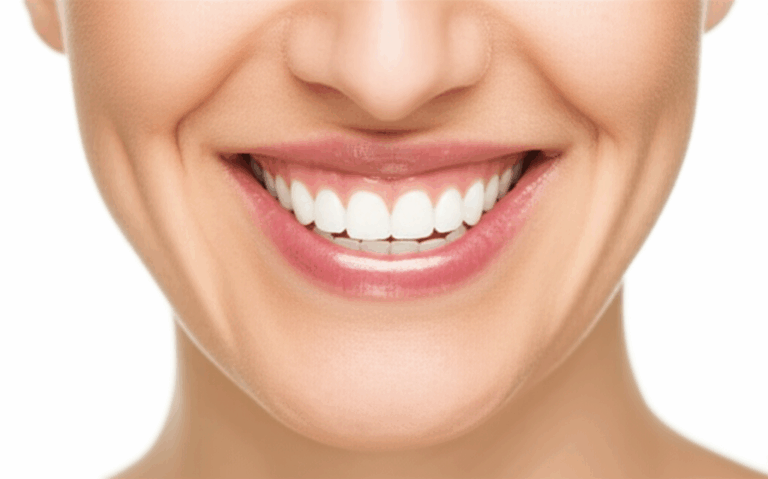
How Much Is a Regular Cleaning at the Dentist? Your Guide to Prices, Insurance, and Savings
That nagging question—“How much is a dental cleaning, actually?”—is more common than you think. Maybe you just got a reminder card from your local dental office, or maybe your insurance changed and you’re worried about a big bill. Sometimes it’s a little scarier: you haven’t seen a dentist in years, and you’re worried about how much it’ll cost. Don’t worry. You’re in the right place.
Dental cleanings are one of the most routine ways to keep your teeth and gums healthy, but details about the price, what’s included, and how to save can feel as tricky as flossing behind your back teeth. Let’s break it all down together—no hard words, no confusing insurance talk, just clear answers to help you make the best choice for your smile and your budget.
In This Article
- What Is a Regular Dental Cleaning—and Why Does the Price Seem So Mysterious?
- The Real Cost: Average Price of a Standard Dental Cleaning (Without Insurance)
- Dental Cleanings with Insurance: What Will You Actually Pay?
- What’s Included in a “Regular” Cleaning?
- What Affects the Price of a Dental Cleaning?
- What’s the Difference? Regular vs. Deep Cleaning (And Why It Matters)
- How to Save Money, With or Without Insurance
- Is a Dental Cleaning Worth It? The Case for Prevention
- Dental Cleaning FAQs: Your Top Questions Answered
- Key Takeaways & Your Action Plan
1. What Is a Regular Dental Cleaning—and Why Does the Price Seem So Mysterious?
Let’s start right at the core of your question: How much is a “regular” cleaning? And even more importantly—what are you even getting for that price?
A “regular cleaning” (dentists call this a “prophylaxis”) is usually suggested if you have pretty healthy gums. During the visit, a dental hygienist removes sticky plaque and tough tartar (that hard gunk your toothbrush can’t remove). You’ll also get your teeth polished, and most dentists will check for cavities, gum problems, or even signs of mouth cancer.
But here’s where it gets confusing. The price can be all over the place. Why? Think about getting an oil change: the price depends on what’s included (fluids, filter, quick look-over), where you live, and if your car needs extra work. Plus, each dental office sets their own prices, and insurance companies all have their own rules about what they’ll pay. That’s why your friend in another city—or with different insurance—might pay something very different.
Bottom line: The “mystery” around dental cleaning cost mostly comes down to three things:
- Where you live and which dentist you go to
- If you have insurance, and what kind
- What services are included with your cleaning
Don’t worry. We’ll break down each part in simple words.
2. The Real Cost: Average Price of a Standard Dental Cleaning (Without Insurance)
So, what’s the usual cost if you just pay out of pocket? Most adults can expect to pay between $75 and $200 for a basic cleaning and a simple checkup. That’s the cash price—no insurance, just a straight fee for your visit.
What changes the price?
- Location, location, location! A cleaning in a small town is usually cheaper than one in a big city. In places with high rent and living costs, dental fees usually go up.
- Dental office vs. dental school or community clinic: Private offices usually charge more. Dental schools might be 30-70% cheaper, but a student (closely watched) will do your cleaning.
- What’s included: Some offices throw in extras like X-rays, fluoride, or a mouth cancer check for new patients. Others add these on, so you might pay $30–$90 more for X-rays or $20–$50 for fluoride.
Think of it this way: Most adults will pay about $100–$150 at regular dental offices for both a cleaning and a checkup. But, if there are new patient deals, your cost could be lower. It never hurts to ask about specials!
Regional Snapshot
- In big cities (like New York or San Francisco), you’ll probably pay toward the high end—or even more.
- In small towns or suburbs, costs are lower.
Tip: If your bill seems high, ask to see a list of what you’re being charged for. Sometimes “cleaning” prices include extras that aren’t needed every time.
3. Dental Cleanings with Insurance: What Will You Actually Pay?
If you have dental insurance (from work, a private plan, Medicaid, or anything else), the amount you really pay might be a lot less—sometimes nothing at all. Here’s how it usually works.
Copays, Deductibles, and Coverage: The Big Three
- Preventive care coverage: Most dental insurance plans (like Aetna, Cigna, Delta Dental, MetLife, and others) pay for two standard cleanings and checkups per year at no extra cost—“100% covered.” Why? Insurance companies know it saves them money because it keeps your teeth healthier.
- Copay: Some plans charge a small fee (usually $10–$30) for the visit. Others are totally free if you use an in-network office.
- Deductible: For cleanings, you usually don’t have to worry about meeting your deductible first. (That’s more for fillings or crowns.)
In-Network vs. Out-of-Network
- In-network: Go to dental offices that “work with” your insurance. You’ll save the most.
- Out-of-network: If you pick a dentist not “in the network,” you might pay more, or your copay will be higher.
HMO vs. PPO: What’s the Difference?
- HMO plans: Usually have the lowest copays and sometimes cover cleanings for free (but you have to use certain dentists).
- PPO plans: Give you more dentist choices, but you might pay a little more at the visit.
Example
Let’s say your PPO pays 100% for basic care. You get a routine cleaning, checkup, and regular X-rays—all paid by insurance. You pay nothing that day. A friend with a different plan might pay $15–$30.
4. What’s Included in a “Regular” Cleaning?
Ever wonder what exactly you’re paying for? Here’s what you usually get with a normal cleaning.
The Steps:
- Exam by the dentist: Before cleaning, your dentist or the hygienist looks at your teeth and gums, checking for cavities, gum problems, or odd spots.
- Plaque and tartar removal (“Scaling”): With special tools (don’t worry, it’s okay!), the hygienist takes off both soft stuff (plaque) and hard stuff (tartar) from above your gums.
- Fun fact: Tartar is like gunk that sticks on a fish tank if you don’t clean it. Toothbrushes can’t get it off, but a pro can.
- Polishing: A grainy toothpaste and spinning brush make your teeth feel slick and remove some stains.
- Flossing: The hygienist flosses your teeth, gets rid of bits between teeth, and might show you better flossing tips.
- Advice: Most cleanings end with personal tips to help you brush, floss, or pick a mouthwash.
Sometimes Included (or Costs Extra):
- Digital X-rays: Recommended once a year or for new patients.
- Fluoride treatment: Good for kids or adults who get cavities easily.
- Mouth cancer check: A quick, simple look for strange changes.
Not Included
- Deep cleaning (scaling and root planing): That’s a different appointment for people with gum problems.
- Fillings, pulling teeth, or crowns: Those cost extra.
5. What Affects the Price of a Dental Cleaning?
You might wonder, “Okay, but why does the cost change so much?” Here’s what makes a difference in your bill.
Geographic Location: City vs. Country
- Offices in cities pay more rent and expenses, so they charge more.
- Small towns usually have lower prices.
Type of Dental Office
- Private practice: Usually costs more, but you get more personal care.
- Big chains: May offer lower prices or new patient deals.
- Dental schools: You pay half or less, but students (watched by real dentists) do the cleaning.
- Community clinics: Prices depend on your income—great if you don’t have insurance.
How Experienced the Dentist or Hygienist Is
- Dentists with lots of training or new tools may charge more, especially if they use advanced digital dental lab gear or keep learning new things.
Add-On Services
- If you’re getting X-rays, fluoride, or a longer exam, expect to pay more.
- Many new patient deals bundle things together at a discount.
Specials and Promotions
- Watch for “New Patient Specials”—you might get cleaning, exam, and X-rays for $99–$150 to try a new office.
How Much Cleaning You Need
- If you have a lot of buildup or gums that bleed, your cleaning may take longer. Some places charge more if you need extra work.
6. What’s the Difference? Regular vs. Deep Cleaning (And Why It Matters)
You may have heard about “deep cleaning” and wondered if it’s just something dentists say to charge more. Nope—these are really different.
Regular Cleaning (Prophylaxis)
- For people with healthy gums and no gum disease
- Only removes stuff above the gums
- Usually takes 45–60 minutes if you go every 6 months
Deep Cleaning (Scaling and Root Planing)
- Needed if you have gum trouble—like swollen, bleeding gums, or deep “pockets” found during a check
- Cleans under the gums and smooths roots
- Often done in “quadrants” (one-fourth of your mouth at a time) since it takes longer
- Much more expensive—$200–$500 per quadrant (not for the whole mouth)
Periodontal Maintenance Cleaning
- For people who’ve had gum disease before
- More in-depth than a normal cleaning, but not as tough as deep cleaning
- Needed more often—every 3–4 months
- Costs more than a regular cleaning, but less than deep cleaning
Why care? If you skip regular cleanings for too long, what could have been a quick visit can turn into a longer and much costlier job.
7. How to Save Money, With or Without Insurance
Don’t let money stop you from getting your teeth cleaned. Here are ways to pay less:
With Insurance
- Use your benefits: Most plans pay 100% for basic checkups and cleaning if you see a dentist in your plan’s list.
- Book your appointments before you use up your yearly limits.
- Call your insurance for a summary so you’re not surprised about costs.
- If you need more than a cleaning, ask for a treatment plan and get it checked by your insurance.
Without Insurance
- Dental savings plans: These aren’t insurance but give you discounts (usually 10–60%) at certain dentists.
- Dental schools: Dental students (watched by pros) give cheaper care.
- Community clinics: Lower-income folks can get care for less.
- New patient specials: Bundle a cleaning, checkup, and X-rays for a low set price.
- Cash discounts: Some places charge less if you pay right away—just ask.
- Payment plans: If you have a bigger job, most offices will work with you so you can pay over time.
Healthy Habits = Savings
Brushing, flossing, and using mouthwash can save you a bunch of money in the long run by stopping bigger problems before they start.
Tip for Overdue Patients: If you haven’t had a cleaning in a long time, don’t let embarrassment keep you away. Dentists want to help—not judge. Today’s the best day to get back to it.
8. Is a Dental Cleaning Worth It? The Case for Prevention
You might ask: “Is it really worth it to pay $150 twice a year for a cleaning?” Here’s the truth—spending a small amount now can keep you from bigger pain (and bills) later.
The Benefits Are Clear
- Prevents holes in teeth and decay
- Stops gum disease before it gets bad—early gum problems can be fixed, serious gum disease can be managed if caught soon
- Spots problems early—catching small problems means easier, cheaper fixes
- Removes surface stains for a brighter smile
- Freshens bad breath
- Reduces risk of mouth emergencies—like a sudden toothache or broken tooth
- Saves money—repairs like crowns or root canals cost many times more than cleanings
For perspective: One big cavity or a root canal can cost $800–$2,000, while a year’s worth of cleanings may run about $200–$400 if you pay cash (or nothing with good insurance).
9. Dental Cleaning FAQs: Your Top Questions Answered
How often should I get a cleaning?
Most people need a cleaning and checkup every 6 months. If you’ve had gum problems or lots of tartar, you may need to go more often.
Can I skip the X-rays to save money?
Sometimes—if you had recent X-rays sent from another office, or your dentist doesn’t think you need them. But X-rays find problems you can’t see. Consider what’s best for your health.
Why is my dental cleaning bill different from my friend’s?
It depends on your location, what’s included, if you have insurance, and your dental health. Even nearby offices can set their own prices. Always ask for an estimate before your visit if you’re worried.
Do all dentists charge the same for a cleaning?
No! Prices can be very different—even in the same city—because each office has its own costs and services.
What if the dentist says I need a deep cleaning?
If you haven’t been to the dentist for years, or if your gums bleed or are swollen, you may need a deep cleaning. Get a second opinion if you’re not sure. Deep cleanings cost more, but ignoring gum disease can lead to losing teeth.
Are there ways to get dental cleanings for free?
Some community clinics, charity groups, or dental schools offer free cleanings—especially for kids, seniors, or people who don’t have a lot of money. Look online or call your local health office.
10. Key Takeaways & Your Action Plan
Here’s what matters most so you can take care of your teeth and your wallet.
- Plan to pay $75–$200 for a usual cleaning and checkup if you don’t have insurance
- With insurance, most cleanings are free, or cost just a small copay
- Double-check what’s included (ask about X-rays, fluoride, or exams)
- If you’re paying cash, look around—dental schools and clinics can save you a lot
- Go in for regular checkups—they’re the best way to avoid pricier problems later
- Ask questions at every visit. Good communication saves you money and stress
Ready to take the first step? Call your local dentist (or dental school or clinic) for a price quote. Ask about deals, specials, or how they work with your insurance. It’s always smart to compare offices or ask for a second opinion.
Remember—a healthy smile is part of feeling good every day. Regular cleanings help more than just your teeth—they protect your gums, your money, and your confidence.
Bonus: Want to Learn More About Fixing or Replacing Teeth?
If you’ve been told you need more than a cleaning—like a dental implant dental laboratory, new dentures, or even veneers—there’s lots to know. Interested in how a dental ceramics lab makes a crown, or how 3D dental tech is changing everything? Check out our guides to find out how new materials and methods make dental work better, more natural, and sometimes cheaper. And if you have specific dental problems, the sooner you act, the better the outcome.
Quick Reference Table: Typical Costs for Dental Cleaning and Related Services (United States)
| Service | Description | Average Cost (Without Insurance) | Average Out-of-Pocket (With Insurance) |
|---|---|---|---|
| Regular Dental Cleaning (Prophylaxis) | Removes plaque & tartar for healthy gums | $75–$200 | $0–$50 |
| Exam (Routine/Comprehensive) | Dentist checks teeth, gums, and oral health | $50–$150 | $0–$30 |
| Bitewing or Full X-rays | Checks for cavities, bone health | $30–$250 | $0–$75 |
| Fluoride Treatment | Protects teeth, reduces cavities | $20–$50 | $0–$20 |
| Deep Cleaning (per quadrant) | For gum disease, below-gum cleaning | $200–$500 | $50–$150 |
| Periodontal Maintenance | Ongoing care after gum disease treatment | $120–$250 | $30–$70 |
(Adapted from ADA, major insurance carriers. Actual costs may vary by region and provider.)
Still have questions? That means you’re looking out for your health—and we’re here to help! Your dental team is your partner. Don’t be shy about calling and asking them to explain bills, insurance, or care recommendations. You’ve got this.
Remember: The best smiles start with good habits—and yes, that regular trip to the dentist really pays off.








